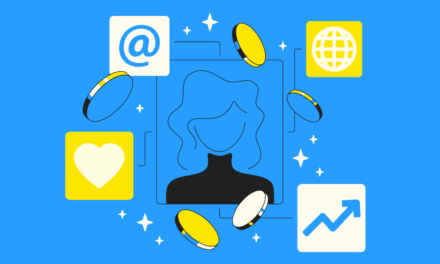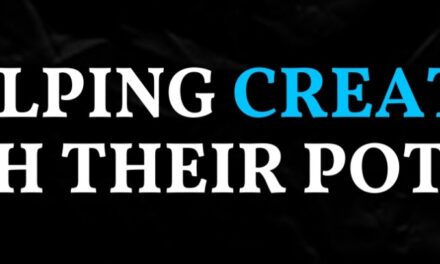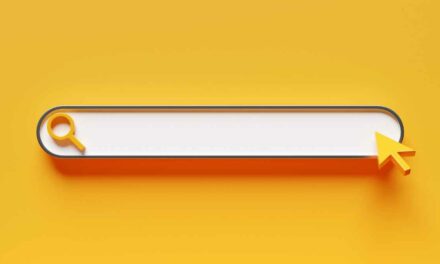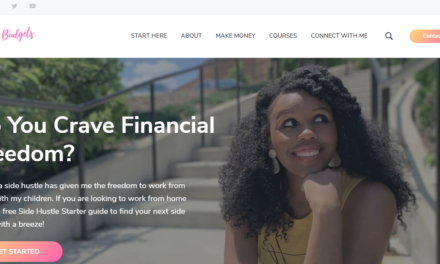I’m still reeling from my experience at the AI Marketing Event, MAICON, last week. I’ve been trying to make sense of it in a way that’s actually helpful to you. I left the event both inspired and uneasy. Inspired because I’ve never seen so many smart, creative people leaning into change (at least since the early days of Content Marketing World). Uneasy because the undercurrent of fear was everywhere.
And it reminded me of the early 2000s when I started at then B2B media powerhouse Penton Media in downtown Cleveland.
When I joined in February of 2000, I was a project manager with seven people between me and the CEO. Within two years, they were all gone. These weren’t bad employees. They were the best people I’d ever worked with: incredible graphic designers, editors, sales reps, and publishers. But as the company made its massive shift from print to online, leadership started cutting costs and chasing efficiency.
They believed cheaper models and new technology would save the business. It didn’t. What it did was hollow out the company. And somehow, I ended up reporting directly to the CEO, not because I was great, but because everyone better than me had been let go (to be blunt, I was cheap talent at an entry-level salary).
That period taught me something I’ve never forgotten: when industries go through major transformation, the people who adapt survive, but many of the best simply get replaced.
That’s what I feel happening again right now.
At MAICON, I spoke with my friend Brian Piper. Brian just left his job to become a full-time content entrepreneur. He told me, with complete conviction, that we have a three-year window. Three years before AI transforms marketing, content creation, and audience building so completely that the rules we’ve been playing by no longer apply.
And honestly, I think he’s right. Every conversation I had that week echoed the same urgency. Everyone was diving into AI, but mostly not out of excitement or curiosity. They were doing it for protection. They were trying to figure out where the opportunities will appear and where the walls are already closing in. It’s important to note that the majority of attendees work for very large companies.
Meanwhile, the richest companies in the world are making it clear that the future of “efficiency” means removing people. Amazon has made hiring freezes a point of pride. Meta just laid off hundreds in its AI unit (to prove a point?) while publicly celebrating productivity gains. Even smaller companies are turning “we didn’t hire anyone this quarter” into a news release.
It’s as if not hiring people has become a badge of honor.
That mindset is now baked into corporate culture. Fewer humans. More output. Less friction. And as AI systems speed up, that thinking trickles down into marketing, agencies, and creative work everywhere.
But here’s the good news. You and I don’t have to play that game.
If you’re reading this, you’re probably not trying to climb someone else’s ladder. You’re trying to build something of your own. And right now, this moment in time, is your window to do it.
Because if you believe that our phones, glasses, and cars will soon generate synthetic, personalized content on demand, then discovery is about to vanish. Your audience won’t “find” you anymore. Their devices will feed them whatever content they think they need. And when that happens, creators who don’t already have direct, permission-based relationships will disappear.
That’s why now is the time to double down on connection. Get your website up. Launch your newsletter. Create something people actually choose to subscribe to. Make it so that your work goes directly to someone’s inbox or mailbox, not through an algorithm’s filter.
Those are the obvious plays. Let’s talk about the less obvious ones.
Three Non-Obvious Moves for the Creator Economy
1. Turn your audience into collaborators, not just followers. The audience you build today doesn’t just buy from you, they can build with you. The creators who treat their subscribers as co-creators will have the one thing AI can’t replicate: belonging. Build feedback loops into your work. Use polls, surveys, and small communities to involve people early. When your audience helps shape your ideas, they don’t just consume your content… they invest in it. I’ve seen this work first hand with our CEX VIP group (hi gang!). Over 30 of us came together to write a book, and while the finished product was words on paper, we all grew closer than ever. I firmly believe that those relationships will help everyone involved for a long, long time.
2. Take a piece of your content offline. As everything around us becomes digital and synthetic, physical experiences will be like luxury goods. A printed newsletter. A quarterly dinner. A local meetup. A short book. Even a small run of “best-of” print issues. Tangibility creates trust. When everything else feels virtual, something you can hold in your hands becomes memorable, meaningful, and rare.
My friend Matt White did this to perfection. He started his platform on rented land (GolfCartingTV) and parlayed that into an incredible in-person experience around custom golf carts. In his first year, he sold out of all sponsorship and booth space. So proud of you Matt!
3. Create a “Memory Layer” for Your Audience. In a world where AI will soon generate infinite personalized content, what people will crave most is shared memory. The creators who intentionally build moments of nostalgia and continuity into their work will win long-term trust.
This means calling back to earlier posts, referencing past milestones, spotlighting long-time subscribers, or celebrating small wins from your community. Think of it like a “living history” of your audience…something that makes them feel part of a story unfolding over time.
Robert Rose and I just did this with our 500th episode of This Old Marketing, where we had dozens of creators and marketers come together to celebrate with us. On LinkedIn we heard from listeners who remembered the first episode from 2013 and were proud to be around for number 500.
So while you may feel like you’re boasting about these moments, they are important for your audience to share in. That means things like book launches, hitting subscriber counts and anniversaries all need content strategies and should be added to your content calendar.
AI can mimic voice, style, and tone… but it can’t fake history (at least not yet). Your collective memory becomes the moat.
I left MAICON feeling two things at once: awe and anxiety. Awe at how quickly creators are adapting, and anxiety that most people still think they have time.
The window is open right now. You can still reach people directly. You can still be discovered. You can still build something that belongs completely to you.
But that window is closing.
Three years from now, this will no longer be about who creates the best content. Or has the best marketing. It will be about who has the deepest connections. So start now. Build fast. Build real. Build directly.
Because when the machines start creating 99 percent of the world’s content… only the truly connected will still be heard.
About the author
Joe Pulizzi is founder of multiple startups including The Tilt and is the bestselling author of ten books including Content Inc. and Epic Content Marketing, which was named a “Must-Read Business Book” by Fortune Magazine. His latest book is Burn the Playbook: Are You Made for More? Build a Life on Your Terms.











